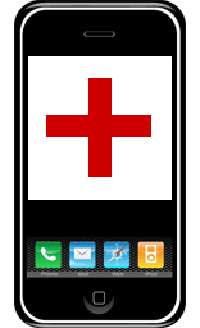New pill recognition software has implications for emergency and clinical settings

Saturday, 2 AM. A 911 dispatcher receives a frantic call: "I found my roommate passed out. I think she may have overdosed!"
But on what? Imagine if, when first responders arrive on the scene, they point a cell phone camera at pills scattered near the victim, and within seconds, they can know what drugs are likely involved.
“In overdose cases like this, where there is uncertainty as to the identity of the pill, a new application could provide real-time identification in the field or emergency room,” says Rahul C. Deo, MD, PhD, an assistant professor at UCSF’s Cardiovascular Research Institute.
Deo is collaborating with UCSF medical student David Ouyang to develop a mobile application that can rapidly identify pills based on color, shape, and imprint. The project has received a significant boost from the T1 Catalyst Mobile Health Translational Project Award offered by the Clinical and Translational Science Institute (CTSI) at UCSF.
The CTSI T1 Catalyst mobile health grant is a tiered award that provides increasing benefit at each of three phases, beginning with feedback and analysis of all proposals. A selected number of awardees are then chosen to receive expert consultation from an exclusive panel of technical, clinical, and business experts. In the final phase, one team is awarded $30,000 to develop its early stage idea.
Deo and Ouyang, recipients of the final award, will use the funds to convert thedemonstration version of their software into a robust and user-friendly application for handheld devices.
According to Deo, there are a number of potential uses for the software, which can not only identify a pill, but access and display a wide range of information on the medication.
“It could also assist with, or eliminate, manual entry of patient medications into electronic health records, which will help physicians as well as encourage patient participation,” Deo says.
Also, in cases when hospital patients are given several medications simultaneously, “the application could serve as a point-of-care verification step for those medications,” he adds.
Deo’s research is focused on using genetics and bioinformatics to understand fundamental differences in cardiovascular disease processes among patients. He is also interested in applying large amounts of data toward the problem of individualizing patient treatments, he says.
Mobile health technologies have the potential of doing just that, with much more frequent recordings of heart rate and blood pressure, as well as environmental factors such as diet and exercise that we have a very hard time measuring otherwise.
Deo’s award points to the role played by CTSI and the T1 Catalyst mHealth grants in fostering, shaping and developing translational mHealth projects at UCSF, says S. Claiborne “Clay” Johnston, MD, PhD, director of CTSI and associate vice chancellor of research at UCSF.
“Digital health is finally a huge growth area,” says Johnston. “It has taken a long time, but now this is a super-hot area for innovation. UCSF and its faculty are perfectly positioned to be contributing the great ideas that become standards a few years from now.”

















